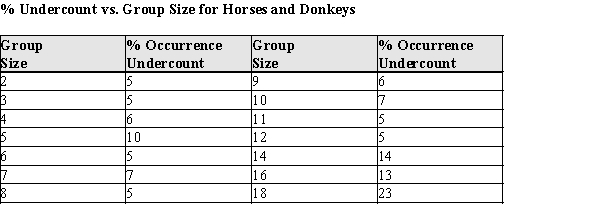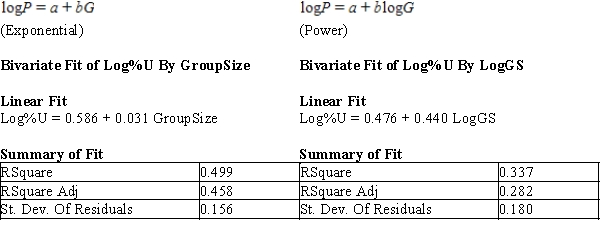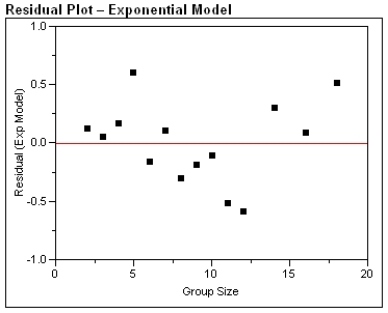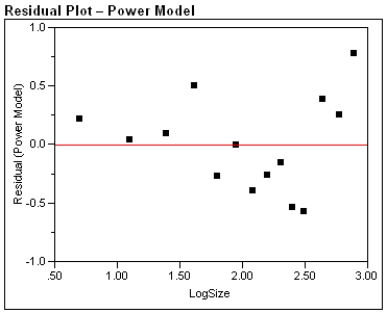One of the problems when estimating the size of animal populations from aerial surveys is that animals may bunch together, making it difficult to distinguish and count them accurately. For example, a horse standing alone is easy to spot; if seven horses huddled close together some may be missed, resulting in an undercount. The relative frequency of undercounts is typically reported as a percent. For example, if there are 10 horses in a group, a person in the plane may typically count fewer than 10 horses 20% of the time. In a recent study, the percent of sightings that resulted in an undercount was related to the size of the "group" of horses and donkeys; the following data were gathered:  After fitting a straight line model,
After fitting a straight line model,  , significant curvature was detected in the residual plot, and two nonlinear models were chosen for further analysis, the exponential and the power models. The computer output for these models is given below, and the residual plots follow.
, significant curvature was detected in the residual plot, and two nonlinear models were chosen for further analysis, the exponential and the power models. The computer output for these models is given below, and the residual plots follow.  Residual Plots
Residual Plots 


 a)For the exponential model, calculate the predicted log (%undercount) for a group size = 10.
a)For the exponential model, calculate the predicted log (%undercount) for a group size = 10.
b)Use your calculations from part (a) to predict the %undercount for a group size = 10.
c)Generally speaking, which of the two models, power or exponential, is better at predicting the log (Percent Undercount)? Provide statistical justification for your choice.
Definitions:
Indexed
A process or feature that creates an index for faster search and retrieval of information from a database.
Required Property
An attribute that specifies whether a data field must be filled out in order to save a record in a database or software application.
Default Value
The initial value assigned to a variable, option, or field in a software application or database, used unless an alternative is specified.
Table Design View
A database view that allows for the detailed definition and modification of a table's structure, including fields, types, and properties.
Q8: Suppose a researcher is collecting data to
Q14: Refer to Exhibit 2-4.<br>Describe the differences and
Q16: Suppose that we are studying the purchasing
Q16: you are working with a family who
Q26: Boca Burger's website features information about products,
Q29: Increasing sample size will generally eliminate bias
Q33: Bat characteristics<br>Biologists know that bats have different
Q45: When creating a confidence interval involving treatment
Q47: Organizations should define themselves not according to
Q69: The time that it takes a randomly